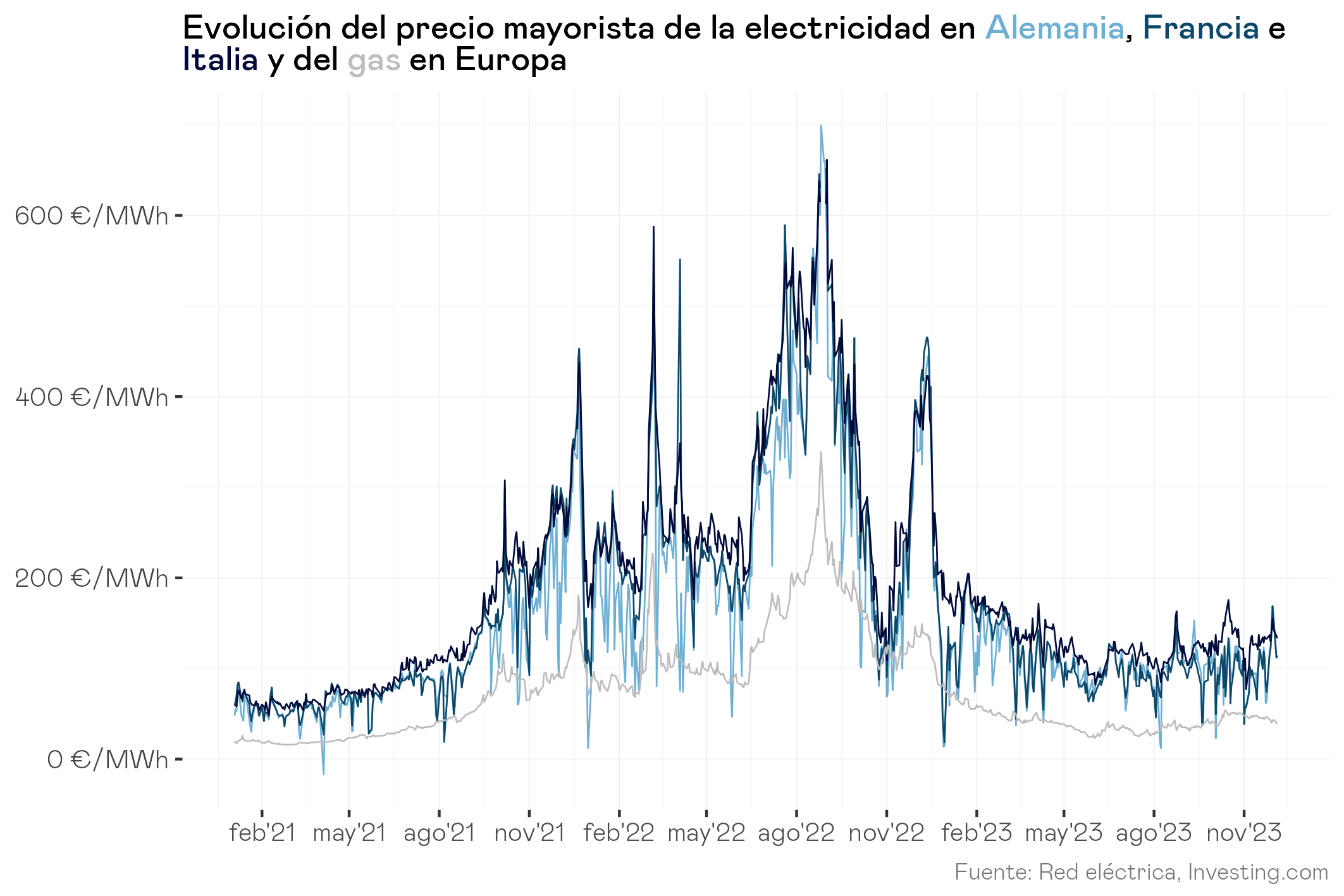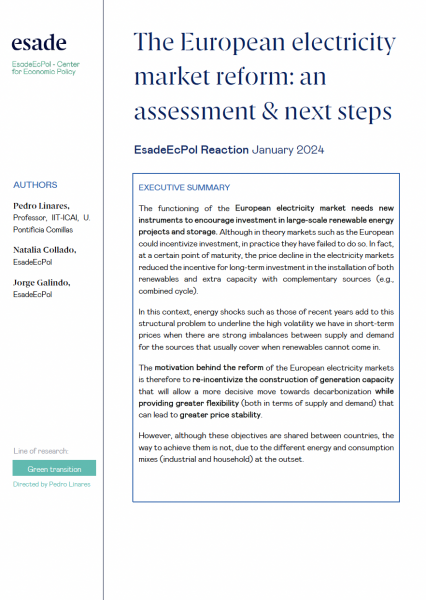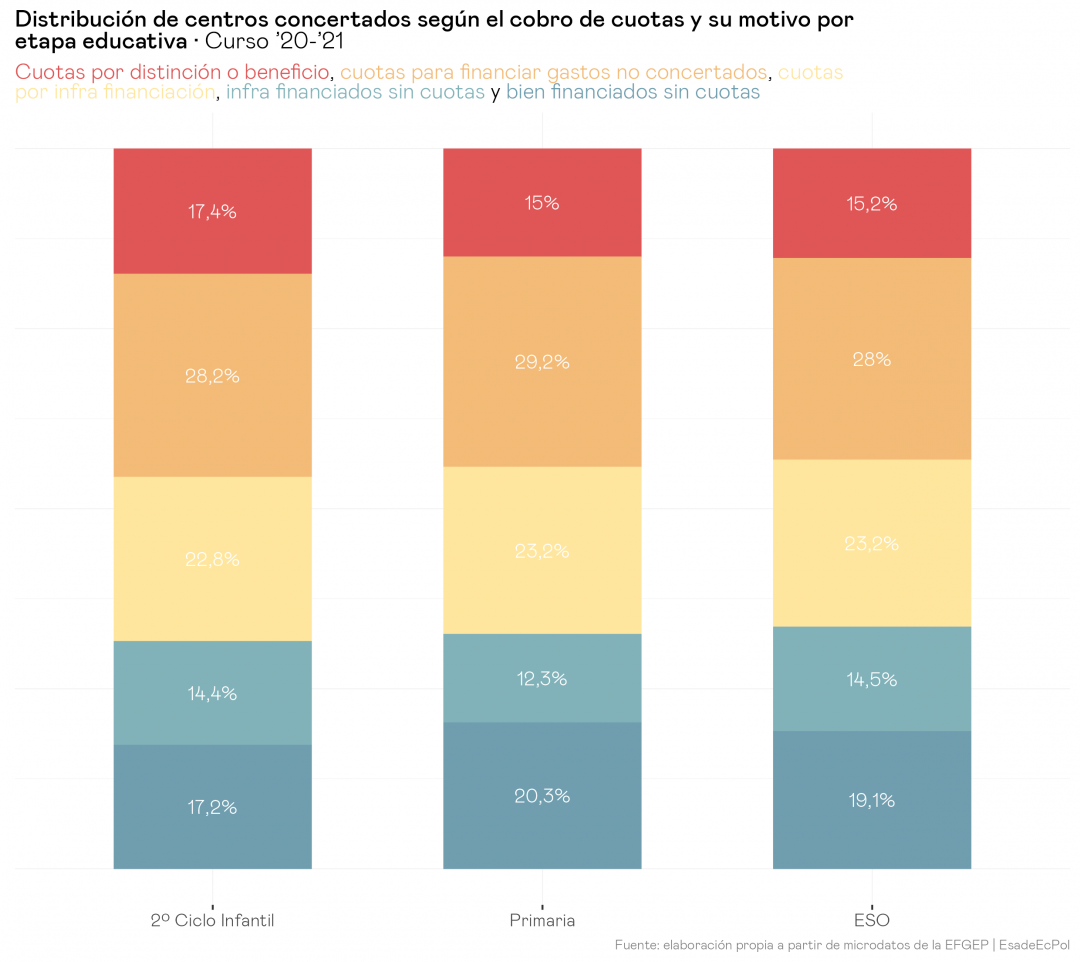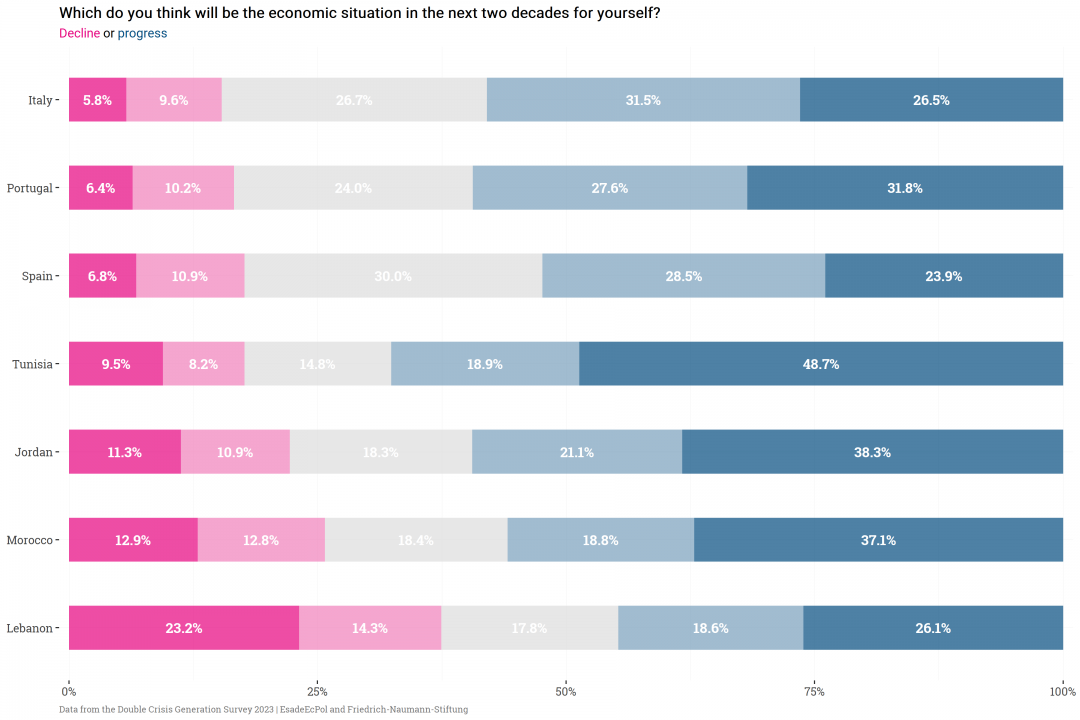
The European electricity market reform: an assessment & next steps
Pedro Linares Llamas, Natalia Collado Van-Baumberghen, Jorge Galindo
12 Jan, 2024
The functioning of the European electricity market needs new instruments to encourage investment in large-scale renewable energy projects and storage. Although in theory markets such as the European could incentivize investment, in practice they have failed to do so. In fact, at a certain point of maturity, the price decline in the electricity markets reduced the incentive for long-term investment in the installation of both renewables and extra capacity with complementary sources (e.g., combined cycle).
In this context, energy shocks such as those of recent years add to this structural problem to underline the high volatility we have in short-term prices when there are strong imbalances between supply and demand for the sources that usually cover when renewables cannot come in.
The motivation behind the reform of the European electricity markets is therefore to re-incentivize the construction of generation capacity that will allow a more decisive move towards decarbonization while providing greater flexibility (both in terms of supply and demand) that can lead to greater price stability.
However, although these objectives are shared between countries, the way to achieve them is not, due to the different energy and consumption mixes (industrial and household) at the outset.
As a result, the outcome is far from those objectives and in its current form the reform of the European electricity market falls short in several key respects.
→ First, while recognizing the importance of long-term market-based instruments for renewables, it fails to develop efficient European markets for their integration.
→ Second, contracts for difference, its central instrument, are intended more as government support than as market tools accessible to all stakeholders.
→ Third, the lack of standardization in the capacity and flexibility markets allows member states to design divergent approaches, potentially distorting the European single market.
On the other hand, where the reform has succeeded is in establishing a common emergency mechanism, under the supervision of the European Union, and in which potential aid to consumers would be at a flat rate, so as not to distort the price signal (and therefore savings).
Expectations prior to the reform of the European electricity market were perhaps too high, especially considering that the current short-term market design took almost a decade. However, this reform should be seen as an initial step, a reflective process that lays the groundwork for a longer development. The ultimate goal should be the creation of a harmonized and long-term focused European electricity market, a process that requires time and careful consideration in order to achieve effective and coherent integration at the European level.
Quote this content as:
Linares, P.; Collado, N.; Galindo, J. (2024). The European electricity market reform: an assessment & next steps. EsadeEcPol Policy Reaction January 2024, Esade. http://www.doi.org/10.56269/20240115/PL


Profesor en la Universidad Pontificia Comillas

Research Economist en EsadeEcPol. Máster en Economía Industrial y Mercados regulados por la Universidad Carlos III de Madrid
View profile


